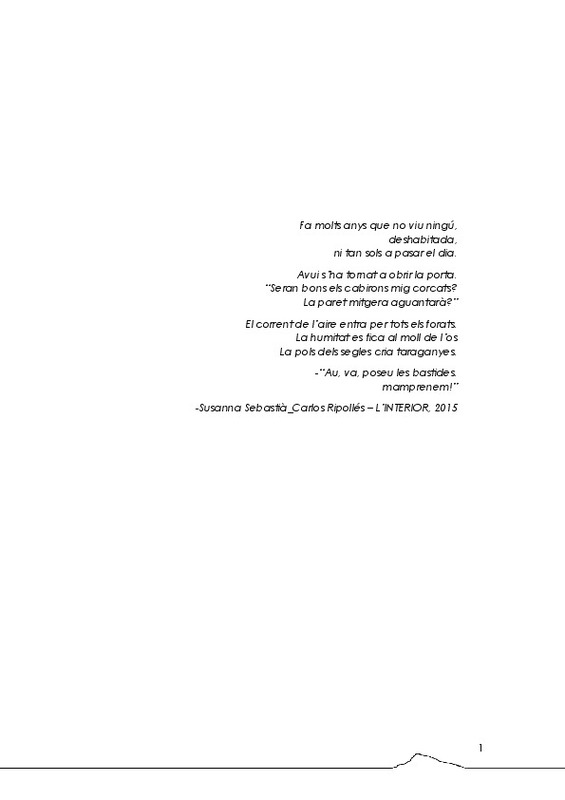JavaScript is disabled for your browser. Some features of this site may not work without it.
Buscar en RiuNet
Listar
Mi cuenta
Estadísticas
Ayuda RiuNet
Admin. UPV
La arquitectura compacta y dispersa relacionada con los itinerarios a Sant Joan de Penyagolosa (Castellón)
Mostrar el registro completo del ítem
Altaba Tena, P. (2015). La arquitectura compacta y dispersa relacionada con los itinerarios a Sant Joan de Penyagolosa (Castellón). http://hdl.handle.net/10251/58334.
Por favor, use este identificador para citar o enlazar este ítem: http://hdl.handle.net/10251/58334
Ficheros en el ítem
Metadatos del ítem
| Título: | La arquitectura compacta y dispersa relacionada con los itinerarios a Sant Joan de Penyagolosa (Castellón) | |||
| Autor: | Altaba Tena, Pablo | |||
| Director(es): | García Esparza, Juan Antonio | |||
| Fecha acto/lectura: |
|
|||
| Resumen: |
El presente estudio se centra en analizar la arquitectura compacta y dispersa ligada a los todavía existentes caminos de peregrinación del monte Penyagolosa. El estudio analiza las edificaciones ligadas directamente a estos ...[+]
The present study is focused on analysing the compact and disperse architecture linked to the still existing pilgrimage routes of Penyagolosa Mountain. The study examines those buildings directly linked to the pilgrimage ...[+]
|
|||
| Palabras clave: |
|
|||
| Derechos de uso: | Reconocimiento - No comercial - Sin obra derivada (by-nc-nd) | |||
| Editorial: |
|
|||
| Titulación: |
|
|||
| Tipo: |
|
recommendations
Este ítem aparece en la(s) siguiente(s) colección(ones)
-
ETSA - Trabajos académicos [4840]
Escuela Técnica Superior de Arquitectura







